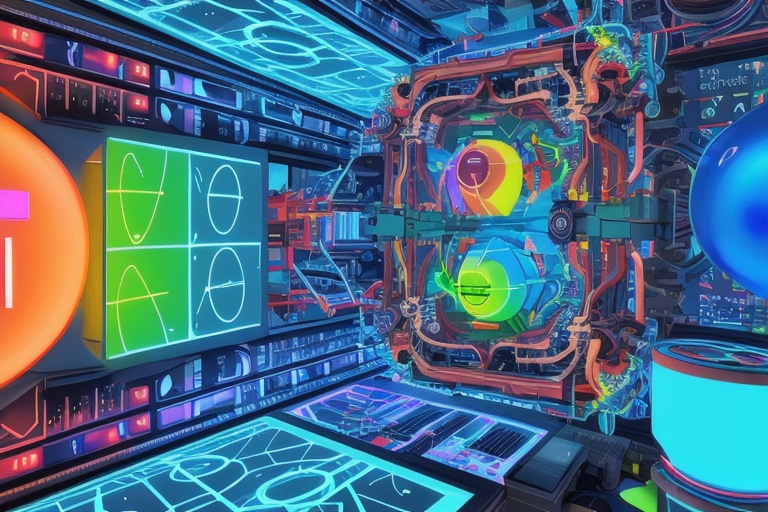Artificial intelligence (AI) and machine learning (ML) are at the cutting edge of technological advancements, revolutionizing industries and shaping our digital world's future. Coupled with programming, these fields form a triad of transformative forces that are indispensable in developing innovative applications and optimizing complex operations. In this comprehensive look, we will explore the cornerstones of programming, AI, and ML, highlighting their practical applications and the limitless possibilities they hold for the future.
Artificial intelligence (AI) and machine learning (ML) are at the cutting edge of technological advancements, revolutionizing industries and shaping our digital world's future. Coupled with programming, these fields form a triad of transformative forces that are indispensable in developing innovative applications and optimizing complex operations. In this comprehensive look, we will explore the cornerstones of programming, AI, and ML, highlighting their practical applications and the limitless possibilities they hold for the future.
Understanding the Role of Programming
At the heart of every digital advancement lies programming. It is the craft of composing detailed instructions that tell computers how to perform specific tasks. Programmers proficiently utilize an array of programming languages—such as Python, known for its simplicity and versatility; Java, celebrated for its robustness; and C++, admired for its performance—to build intricate software applications and algorithms.
The Fundamentals of Artificial Intelligence
Artificial intelligence embodies machines' capability to simulate aspects of human intelligence. Advanced AI systems can learn from data, make decisions, and even reason—all with minimal human interference. These feats are achievable thanks to sophisticated algorithms and voluminous data sets that allow computers to recognize patterns and process information akin to the human mind. AI's scope of application is vast, from natural language processing, where computers learn to interpret and generate human-like text, to computer vision, which enables machines to recognize visual information, to robotics, where AI becomes the brain of automatons.
Machine Learning - AI's Dynamic Offspring
Delving deeper into the realm of AI, we encounter machine learning—a subset that emphasizes the ability of machines to ingest data and self-improve over time. The core of ML lies in its algorithms' ability to analyze massive amounts of data, uncover underlying trends, and fine-tune their operations without being explicitly programmed for each task. The implications of ML span multiple sectors, with algorithms that can categorize information, predict outcomes, and unlock valuable insights in areas like finance, where they contribute to creating better trading models, or healthcare, where they are used to personalize treatment strategies based on patient data.
Industry Transformations Through AI and ML
The prowess of programming, AI, and ML is not confined to theoretical applications but manifests powerfully across various industry verticals. In healthcare, AI-driven tools are revolutionizing patient care by enabling the automation of diagnostic processes, the analysis of complex medical images, and the crafting of bespoke treatment plans. This synergy of technologies enhances service delivery while promoting accuracy and extended reach.
In the financial world, the fusion of programming acumen and ML savvy spawns advanced trading systems, risk assessment frameworks, and anti-fraud mechanisms—all designed to bolster fiscal decision-making and reduce monetary risks.
Yet another notable application is seen in the transportation sector. Here, programming, coupled with AI and ML, underpins the advancement of self-driving vehicles. These smart vehicles are trained to interpret myriad on-road situations, understand traffic cues, and make autonomous driving decisions—signalling a potential upheaval in efficiency, safety, and environmental conservation in transportation.
Beyond these specific fields, the collective influence of these technologies catalyzes the development of intelligent cities, refines energy distribution networks, and fortifies cybersecurity defenses. As we witness these technologies' integration into the societal and technological fabric, the demand for proficient professionals in these domains soars, prompting a call to action for continuous learning and adaptation.
Preparing for a Tech-Driven Future
The evolution of technology mandates that we, as individuals, proactively seek to enhance our skill sets. Delving into programming languages, grasping AI concepts, and mastering ML techniques pave the way to myriad career opportunities. Educational resources are abundant, ranging from entry-level courses to in-depth training programs, making knowledge accessible to all who wish to venture into these exciting territories.
The interplay of programming, AI, and ML is not just remolding industries; it's fundamentally altering how we interact with the world around us. These technologies offer a portal to an array of applications that touch on every aspect of our lives. From improving medical outcomes to transforming financial operations, and from reimagining transportation to safeguarding our digital ecosystems, the implications are profound.
Our foray into these groundbreaking fields is only beginning. The upcoming segments of our series will delve into the nitty-gritty of programming languages and their specific uses, while also shedding light on the intricacies of AI and ML in modern-day applications. Stay with us as we continue to unravel the intricacies of these dynamic fields that stand at the forefront of innovation and progress.
Information for this article was gathered from the following source.

